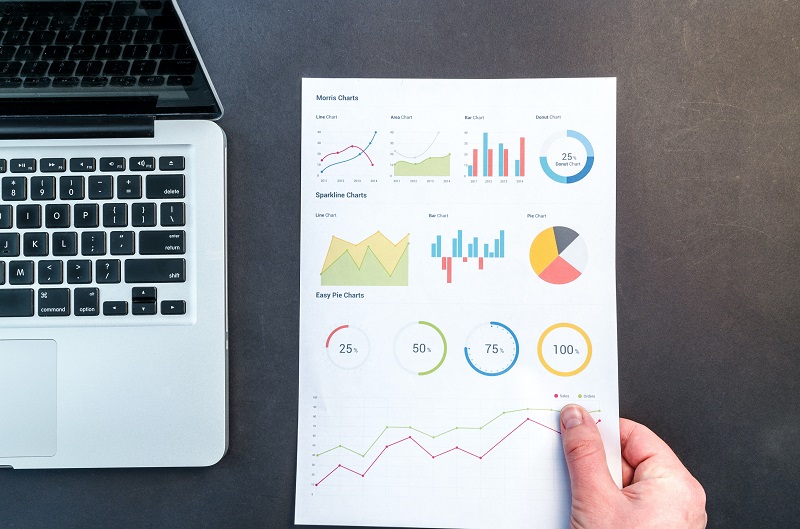The importance of predictive analytics in retail eCommerce market can be brought to light only by analyzing the sales patterns and customer behavior before the predictive analytics technology took the sector by storm. To illustrate, years back, a leading eCommerce giant planned, designed, and procured thousands of fashion accessories with an expectation of full-filling any number of orders as fast as possible based on the fashion trend. Unfortunately, they have received no orders for the products despite the huge spending on marketing and procuring the products. And all these happened out of a misprediction.
In this blog, let’s explore the uses of predictive analytics in retail eCommerce business.
What is Predictive Analytics, and why it matters?
Predictive analytics is a modern data analytics technology stack that involves many advanced techniques such as data mining, data extraction, statistics, modeling, machine learning, and artificial intelligence. Touching these points, predictive analytics help businesses forecast future risk and opportunities for the eCommerce business and have informed decisions.
Also, predictive analytics in retail analyze the critical connections between different business-appropriate parameters such as consumers’ shopping history and behaviors, transactional data, customer queries to assess the opportunities and risk associated with the target market. This helps eCommerce businesses to understand demand and forecast accurately throughout seasons.
How to Build a Predictive Analytics Business Environment?
Coupling data mining, text analysis, and statistical models, businesses can create an intelligent business environment with data as its driving force. Uncovering the relationships and patterns of the collected structured and unstructured data such as customer age, gender, income, purchase history, interests, and the unstructured text-based open data, e-commerce businesses can build the data models to start extracting the prediction.
The whole process will be executed in different steps instead of a single process as follows
- Define Goal: E-commerce stores should define the result, deliverables, scope, and objectives of utilizing predictive analytics for retail solutions to measure KPIs and validate their impact on business.
- Data Mining: Collecting and preparing data from diverse sources for analysis provides an end-to-end view of customer engagement with discrete, measurable sales indicators.
- Data Analysis: The collected/mined data should be analyzed and undergo validation, cleaning, structuring, modeling based on the goals/objective of the business for the best result.
- Statistical Modeling: The analyzed data and initial assumptions/hypotheses are supposed to validate with statistical models to develop predictive models about future business prospects. Businesses can try multiple models to choose the best.
- Model Deployment: Once the analysis and modeling did, the next step is deploying the predictive model into the business processes and automated systems to pull the results as early as possible.
- Model Monitoring: The process never ends by deploying the predictive models into the systems, but users have to monitor the performance to make sure the preferred models are working well and providing the result.
Benefits of Predictive Analytics in Retail Ecommerce Business
Predictive analytics provides a host of benefits to eCommerce businesses to gain business benefits faster. With its robust and accurate future forecasting capacity, it helps eCommerce stores to plan prior and take strategic decisions earlier. The key benefits predictive analytics for retail ecommerce shops provide are
- Enhanced Product recommendations and promotions: Predictive analytics enable eCommerce stores to make concentrated efforts to strengthen product recommendations to prospective customers. Based on the purchase pattern, search history, and clicks of individual customers, the analytical model that is work join hands with machine learning put forward the best product recommendations and promotions to increase customers’ shopping experience.
- Deeper understanding of customer habits and preferences: Predictive analytics enable eCommerce shops to analyze what would be the customer prefers to buy, within what range price, quantity, quality, and brands in real-time. Most of the predictive analytics tools leverage artificial intelligence services to deliver personalized customer experience by understanding their shopping behavior and history.
- Enables to offer better pricing models: In the online retail market, product prices are key sales factors that ensure the success of brands and those to succeed to provide the best win the race. Predictive analytics for retail models help businesses to offer the optimum price trends based on the changing market trends and customer preferences.
- Helps to detect and minimize fraud: One of the key factors that thwart fellow online shoppers from checkout the purchases on e-commerce stores is online fraud. Analyzing the product categories and customer behavior that are susceptible, predictive analytics solutions can help eCommerce businesses to detect and reduce credit card frauds.
- Enhanced supply chain optimization: With predictive analytics tools, eCommerce stores can identify product demands in different seasons. Hence, they can make informed decisions based on future product demand predictions and manage the inventory easily.
- Faster critical business decisions: The market demands and retail trends a too dynamic in nature. Eccomerce market demands quick decisions based on the changing customer trends and behavior. Integration predictive analytics solutions help to take critical business decisions faster, leaving the chances of business delays behind.

